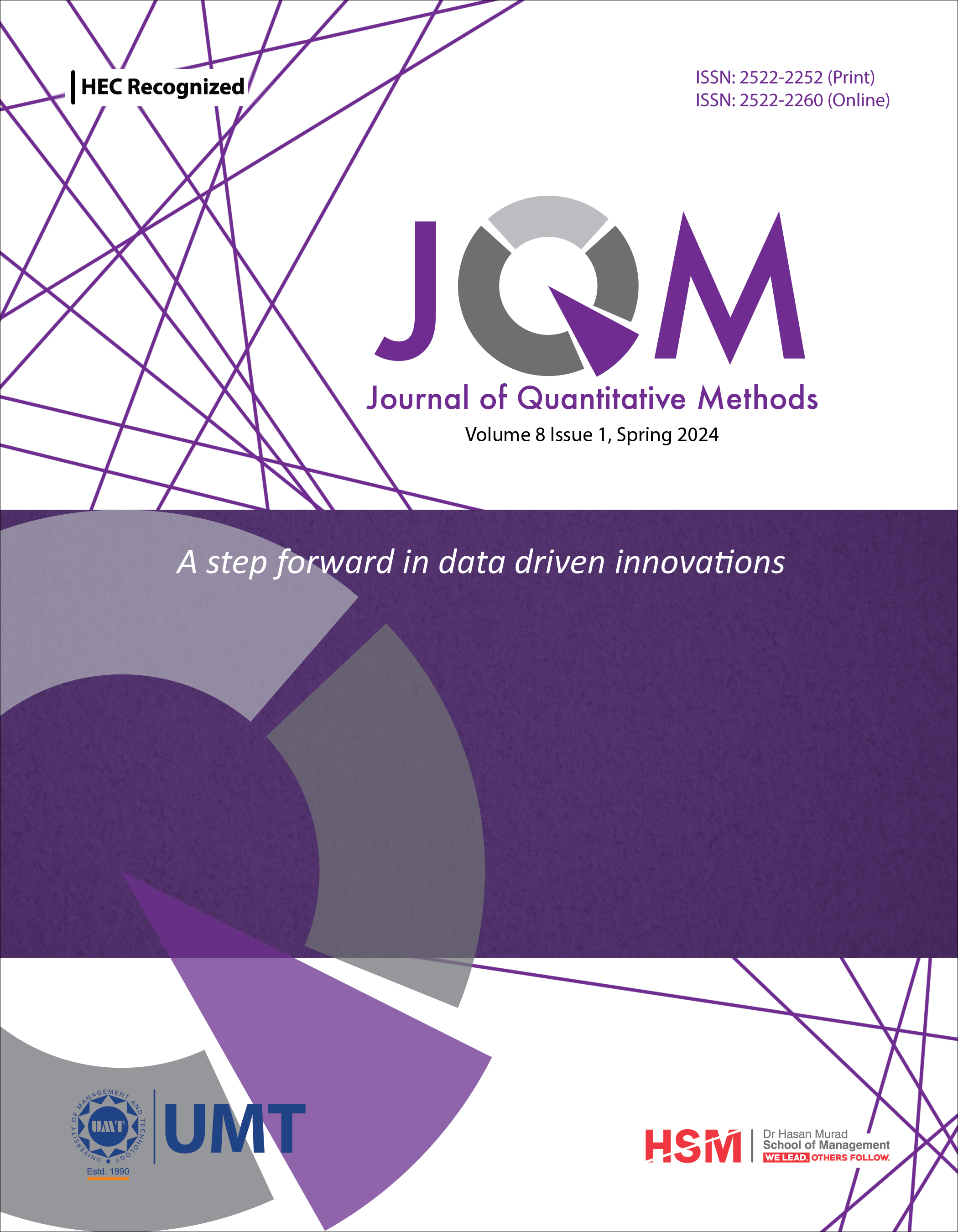Extended Lai Distribution; Increase, decrease, upside and downside bathtub distribution
Abstract
In the study, a distribution with four parameter of modified Weibull distribution has been purposed. The Purposed distribution has an ability to show decreasing & increasing, bathtub and upside-down bathtub failure rate. Quantile function for the purposed distribution is also represented. The new distribution has special sub models as its special cases such as Weibull distribution, Newly Modified Weibull Distribution and extreme value distribution. Infinite representation of moments has also been represented. Maximum Likelihood estimation has been adopted for the estimation of new distribution. The present study also involves the goodness of fit for the purposed distribution. Statistical Inference for the purposed distribution parameters is also illustrated. Numerical study has also been conducted for the parameter estimation. WPP also use to show the reliability of purposed distribution. Two applications are also considered for the demonstration of purposed distribution.
Downloads
References
2. Carrasco, J. M., Ortega, E. M., & Cordeiro, G. M. (2008). A generalized modified Weibull distribution for lifetime modeling. Computational Statistics & Data Analysis, 53(2), 450-462.
3. Corless, R. M., Gonnet, G. H., Hare, D. E., Jeffrey, D. J., & Knuth, D. E. (1996). On the LambertW function. Advances in Computational mathematics, 5(1), 329-359.
4. Gilchrist, W. (2000). Statistical modelling with quantile functions: CRC Press.
5. Glaser, R. E. (1980). Bathtub and related failure rate characterizations. Journal of the American Statistical Association, 75(371), 667-672.
6. Gupta, R. C., Gupta, P. L., & Gupta, R. D. (1998). Modeling failure time data by Lehman alternatives. Communications in Statistics-Theory and methods, 27(4), 887-904.
7. Hjorth, U. (1980). A reliability distribution with increasing, decreasing, constant and bathtub-shaped failure rates. Technometrics, 22(1), 99-107.
8. Lai, C. (2013). Constructions and applications of lifetime distributions. Applied Stochastic Models in Business and Industry, 29(2), 127-140.
9. Lai, C., Xie, M., & Murthy, D. (2003). A modified Weibull distribution. IEEE Transactions on Reliability, 52(1), 33-37.
10. Lemonte, A. J. (2013). A new exponential-type distribution with constant, decreasing, increasing, upside-down bathtub and bathtub-shaped failure rate function. Computational Statistics & Data Analysis, 62, 149-170.
11. Marshall, A. W., & Olkin, I. (2007). Life disStributions (Vol. 13): Springer.
12. Mudholkar, G. S., Srivastava, D. K., & Freimer, M. (1995). The exponentiated Weibull family: a reanalysis of the bus-motor-failure data. Technometrics, 37(4), 436-445.
13. Nadarajah, S., & Haghighi, F. (2011). An extension of the exponential distribution. Statistics, 45(6), 543-558.
14. Nadarajah, S., & Kotz, S. (2005). On some recent modifications of Weibull distribution. IEEE Transactions on Reliability, 54(4), 561-562.
15. Prentice, R. L. (1974). A log gamma model and its maximum likelihood estimation. Biometrika, 61(3), 539-544.
16. Sarhan, A. M., & Apaloo, J. (2013). Exponentiated modified Weibull extension distribution. Reliability Engineering & System Safety, 112, 137-144.
17. Weibull, W. (1951). Wide applicability. Journal of applied mechanics, 103(730), 293-297.
18. Xie, M., & Lai, C. D. (1996). Reliability analysis using an additive Weibull model with bathtub-shaped failure rate function. Reliability Engineering & System Safety, 52(1), 87-93.
Copyright (c) 2024 Zeeshan Maqsood, Saima Atif, Sadia Ashraf

This work is licensed under a Creative Commons Attribution 4.0 International License.
JQM follows an open-access publishing policy and full text of all published articles is available free, immediately upon publication of an issue. The journal’s contents are published and distributed under the terms of the Creative Commons Attribution 4.0 International (CC-BY 4.0) license. Thus, the work submitted to the journal implies that it is original, unpublished work of the authors (neither published previously nor accepted/under consideration for publication elsewhere). On acceptance of a manuscript for publication, a corresponding author on the behalf of all co-authors of the manuscript will sign and submit a completed Copyright and Author Consent Form.







